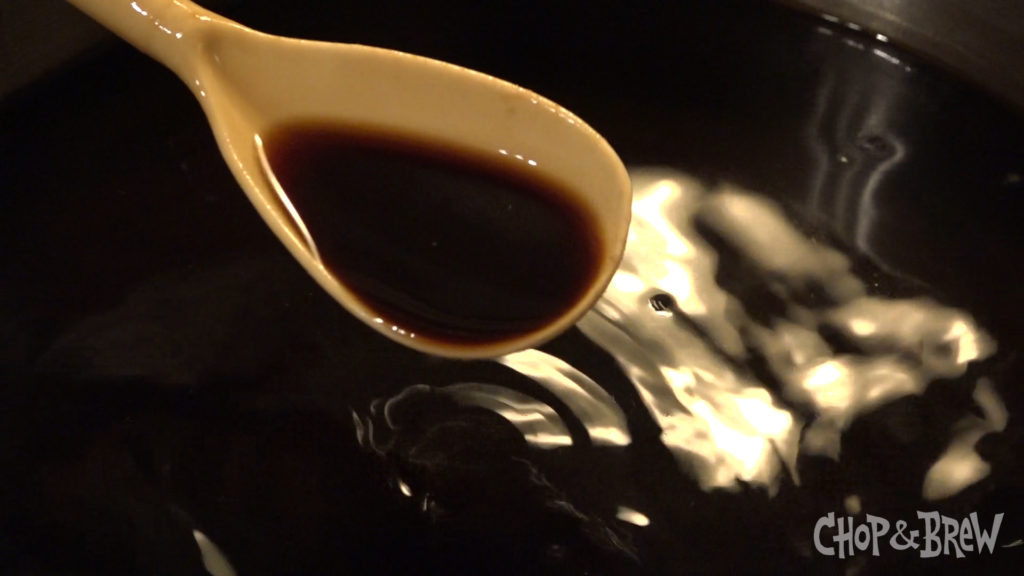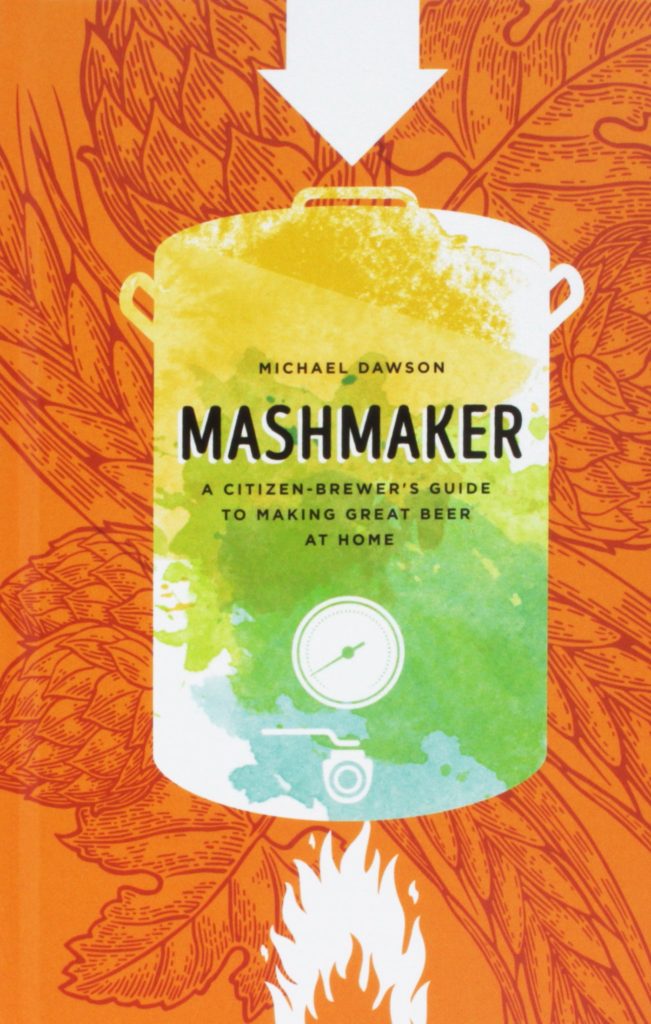
Here is the original recipe for Ryed Irish Stout, which was changed up slightly for the version seen brewed and sampled in our Chop & Brew episode. This recipe is from Michael Dawson’s book, Mashmaker: A Citizen-Brewer’s Guide to Making Great Beer at Home, a collection of 64 witty and detailed homebrew recipes, each amended with options for the brewer to customize each beer. Buy your copy today with this link and directly support Chop & Brew. Cheers, citizens!
RYED IRISH STOUT
by Michael Dawson
Targets: OG: 1.046, IBU: 33, SRM: 34, ABV: 4.8%
Dog-ear this page for February, so you can plan ahead for St. Patrick’s Day with a New World twist on an Old World classic.
Dry stout, typified by Guinness and Murphy’s, is a striking beer— jet-black with ruby highlights and a surprisingly pale head make for an appealing visual contrast. The aromas and flavors are a one-two punch of roasty and bitter, but with a soothing creamy texture. The disappearing liquid in the pint leaves lacy rings on the inside of the glass to remind you that you need another.
Our tweaked version will keep all that, but rye will add a new dimension—a little more earthiness (think pumpernickel bread) and a hint of wintergreen and herbal spice underneath. It’s still going to have what many would consider another defining characteristic of dry Irish stout: multi-pint drinkability.
Unmalted flaked barley and unmalted roast barley are what make Irish stouts tick. The latter creates both the signature color and the acidic, bitter, coffee-like aroma and palate. The former, rich in gummy glucans and other high-molecular weight proteins unbroken by the malting process, is responsible for the aforementioned creamy-smooth texture. We’ll replicate that texture, plus add earthy-minty notes, by replacing the flaked barley 1:1 with flaked rye.
It should also be noted that another tick-maker for our Dublin hallmark is the blending back of a small amount (3 percent or so) of pasteurized, soured beer into the final product for complexity and a bit of a signature “tang.” We won’t explore that technique with this recipe, but feel free to experiment.
Other possible riffs here might include:
- Replacing some or all the roast barley with black and/or chocolate malt for a smoother roast profile.
- Replacing some of the roast barley with chocolate rye.
- Replacing the flaked rye with rye malt for a leaner, less silky body.
- Double the grain bill and triple the hop load to make an imperial rye stout
SHOPPING LIST
- 6.5 lbs. MCI Irish Stout Malt (or any nice UK pale malt.)
- 1.75 lbs. flaked rye
- 1 lb. roasted barley
- 8 oz. rice or oat hulls (optional)
- 1 oz. Northdown
- An English or American ale strain with a clean profile and good attenuation. I’m using Wyeast 1450 Denny’s Favorite 50.
KEY POINTS FOR KEY PINTS
Rice or oat hulls! If you’re brewing in an MLT with batch or fly sparging, consider including some. Flaked adjunct grains are gummy and cause stuck mashes, and a few ounces of prevention is worth a pound of swearing and remashing.
Just bitterness, please: Northdown is a wonderful hop, but we’re only after alpha acids, so any workhorse, dual purpose, mid-range alpha hop variety from the UK or US is a viable option—Challenger, Northern Brewer, or the like.
No Irish ale yeast for an Irish stout? Since we want the rye to shine through, I am suggesting a cleaner-tasting yeast than my normal Irish ale strain. Wyeast 1450 won’t produce the same amount of esters, plus it will attenuate well and help enhance the creaminess.
Nitro: Not necessary, but nice. A hypnotic cascade of bubbles resolving itself into a two-tone pint is understandably sexy for a lot of stout enthusiasts, myself included.
BREWING
PREP
- Mill the stout malt and roasted barley, or have it done for you at the shop. (The flaked rye and oat/rice hulls don’t need to be milled.)
- Collect and heat strike water to approximately 165°F.
MASH & SPARGE
- Mash rest: Add all grains (plus hulls, if using) to strike water, mix to 151-153°F, and rest for 60-90 minutes. Collect and heat sparge water.
- Mashout: Heat to 170°F for 5 minutes.
- Sparge and collect the wort in the boil kettle.
BOIL (60 minutes, while asking yourself why you don’t brew stout all the time.)
- T-60: Add 1 oz. Northdown.
- T-0: Cool the wort, transfer to a sanitized fermentor, aerate well, and add yeast.
FERMENTATION AND BEYOND
- Primary fermentation: About 7-10 days. Aim for a maximum temp in the mid 60s°F.
- Rest in primary for a couple-three-days after FG is reached, to clean up diacetyl and clarify, then package.
- Drink soon after it’s carbonated—it won’t see much benefit from extended aging. Just make sure to save some for your corned beef and cabbage.

